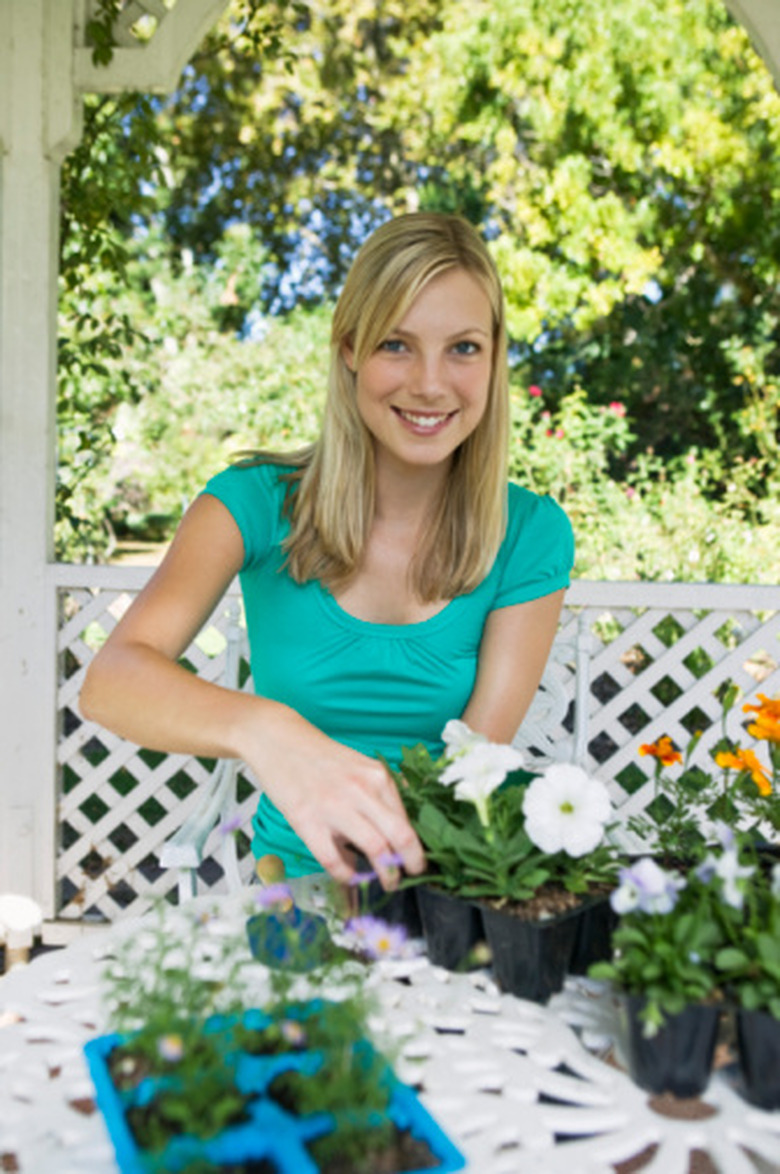What Time Of Day Should I Plant Flowers?
Most gardeners plant seed or transplant seedlings to the garden whenever they get the time to and don't pay much attention to the time of day. Among those who do, heat, temperature, season, positions of the sun and moon, and other factors go into the decision on what time of day they should plant.
Heat
Newly planted starter plants and seedlings always experience some transplant shock. The leaves may wilt or droop for a time after planting. Hot direct sunshine can irreparably damage a freshly set seedling. It is best to choose a quiet time of day when the plant has the most time to recover before facing full sunshine. Late afternoon is particularly advantageous during hot weather since hours of hot sun immediately after planting can exacerbate the slight wilting caused by transplant shock. Water the plant, and let it sit overnight to give it time to absorb water before the sun comes up in the morning.
Wind
Wind is another factor that can damage newly transplanted plants. Ordinarily, winds tend to die down late in the day and remain quiet overnight. Check the weather, though. If a storm front is coming your way, all bets are off. Check the forecast, and do not plant tender seedlings until you have a few days of calm weather and still days ahead of you.
Seeds
For seeds, on the other hand, warm earth and a liberal watering may be just the ticket for encouraging the newly planted seeds to swell and thrust up their new stems. Check the weather forecast, and sew your seeds at the best time of day to give the seeds as many hours as possible to sit undisturbed in the ground before they face a drenching rainstorm.
The Moon
According to "National Geographic," the ancient practice of planting by the phases of the moon has gained popularity in recent years. Many gardeners swear by the method. Even the venerable "Farmer's Almanac" still publishes a calendar for planting by the phases of the moon. Most authorities agree that the dark of the moon is the best time for planting perennials and biennials, bulbs and seedlings. Some even recommend actually planting at night in the dark of the moon, when the new moon begins to wax again. A 1995 study cited by "National Geographic," carried out by the National Soil Tilth Laboratory in Ames, Iowa (Buhler and Kohler, 1995) showed that tilling or disturbing the soil on a moonless night actually inhibited the germination of weed seeds exposed in planting or plowing, resulting in fewer weeds in your garden. Whatever you believe, plenty of gardeners will be happy to produce anecdotal evidence that suggests seeds planted at the dark of the moon sprout more quickly, grow more vigorously and produce larger harvests.
